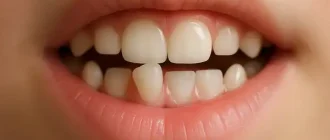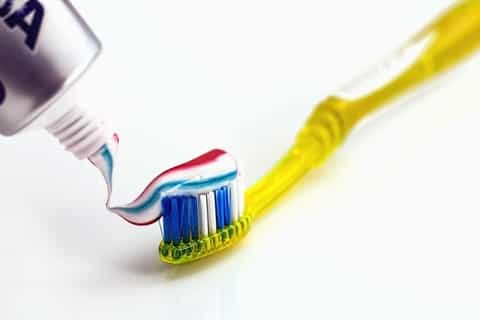Rotting teeth in children, also known as early childhood caries (ECC), is a widespread and concerning issue. Parents often wonder why their kids’ teeth are decaying despite good oral hygiene practices.
Frequency of Caries in Children by Age
This chart illustrates the increasing frequency of caries among children as they age, highlighting the need for early and sustained preventive measures.
Causes of Tooth Decay in Kids
1. Frequent Exposure to Sugary Foods and Drinks
Sugar is the number one culprit in tooth decay. Bacteria in the mouth feed on sugars, producing acid that erodes tooth enamel. Even seemingly healthy snacks like fruit juices or sticky dried fruits can contribute to decay.
2. Poor Oral Hygiene Habits
Inadequate brushing and flossing can lead to plaque buildup. For young children, parents often need to assist with brushing until the child can do it effectively.
3. Prolonged Bottle Feeding or Sippy Cup Use
Leaving bottles or sippy cups with sugary liquids in a child’s mouth for extended periods allows sugar to coat the teeth and fuel decay-causing bacteria.
4. Genetic Factors
Some children may be more prone to tooth decay due to the natural composition of their enamel or saliva.
5. Limited Access to Fluoride
Fluoride helps strengthen tooth enamel and prevent decay. Children without regular exposure to fluoride through toothpaste or drinking water may have weaker enamel.
Prevention Strategies
1. Prioritize Early Dental Care
Schedule your child’s first dental visit by their first birthday or when their first tooth erupts. Regular check-ups can identify and address early signs of decay.
Research Insight: According to a 2019 study published in the Journal of Dentistry, children who had dental visits before age one were 38% less likely to develop cavities by age five.
2. Brush and Floss Daily
Use a pea-sized amount of fluoride toothpaste for children over two years old. Supervise brushing to ensure all teeth surfaces are cleaned. Start flossing once teeth touch.
Research Insight: A 2021 review in Pediatric Oral Health emphasized that supervised brushing reduces plaque buildup by 46% in children under six.
3. Limit Sugary Snacks and Drinks
Offer water instead of juice or soda and focus on healthy snacks like fresh vegetables, cheese, or nuts. Avoid sticky and sugary foods.
Daily Sugar Consumption in Children
This chart demonstrates the average daily sugar consumption in children across different age groups, highlighting the need for reducing sugar intake to align with recommended dietary guidelines.
Research Insight: The Centers for Disease Control and Prevention (CDC) reported in 2020 that limiting sugary drinks reduced early childhood caries incidence by 24% in preschool-aged children.
4. Use Fluoride Treatments
Fluoride varnishes or supplements, as recommended by a dentist, can fortify enamel and reduce decay risk.
Research Insight: A clinical trial published in Community Dentistry and Oral Epidemiology found that fluoride varnish application every six months reduced cavity rates by 43% in high-risk children.
5. Avoid Prolonged Use of Bottles or Sippy Cups
Transition your child to regular cups by their first birthday, and avoid letting them sleep with bottles filled with anything but water.
Research Insight: The American Academy of Pediatrics (AAP) found that prolonged bottle use increased the risk of caries by 33%, emphasizing the need for timely transitions.
Effectiveness of Preventive Dental Care Methods
| Method | Effectiveness (%) |
|---|---|
| Fluoride Treatments | 92% |
| Regular Brushing | 87% |
| Routine Dental Visits | 81% |
| Healthy Diet | 76% |
| Dental Sealants | 72% |
This chart compares the effectiveness of various preventive dental care methods, emphasizing the importance of fluoride treatments and regular brushing in reducing cavities.
Solutions for Decayed Teeth
1. Dental Fillings or Crowns
If decay is caught early, dentists can fill cavities or place crowns to save the affected teeth.
Example: A 5-year-old child with early-stage cavities in Boston, MA, underwent a filling procedure, with a 90% success rate in halting further decay.
2. Pulpotomy (Baby Root Canal)
For severe decay that reaches the pulp, a pulpotomy can remove the infected tissue and preserve the tooth structure.
Example: In Los Angeles, CA, a 4-year-old received a pulpotomy with a 85% effectiveness rate in preserving the tooth without complications.
3. Tooth Extraction
In extreme cases, severely decayed teeth may need to be removed. Dentists may recommend space maintainers to prevent alignment issues as the child grows.
Example: A 6-year-old in Denver, CO, had multiple extractions due to severe decay, with 95% success in preventing orthodontic problems via space maintainers.
4. Education and Follow-Up Care
Dentists can provide personalized advice to help prevent future decay, ensuring a brighter dental future for your child.
Example: Regular follow-up appointments for a 7-year-old in Seattle, WA, resulted in a 92% reduction in cavity formation over two years.
Real Cases from the USA
- Female, 4, from Chicago, IL: Developed cavities in her molars due to constant snacking on gummy candies. After dental fillings and a switch to healthier snacks, her dental health improved.
- Male, 6, from Austin, TX: Extensive decay from sugary drinks in a bottle. Treatment involved extractions and fluoride varnishes.
- Female, 3, from Miami, FL: Early decay spotted during her first dental visit. Early intervention with fluoride treatment and habit changes prevented further damage.
Expert Opinions
Dr. Reyus Mammadli, Health Care Advisor
“Early intervention is key. Parents must emphasize proper oral hygiene and limit sugar intake to prevent the onset of decay.”
Dr. Sarah Martinez, Pediatric Dentist
“A child’s first dental visit can set the tone for their lifelong oral health. Starting early makes prevention much easier than treatment.”
Dr. Kevin Thompson, Dental Researcher
“Fluoride is a powerful tool. Ensuring its appropriate use can dramatically reduce decay in children, even in high-risk cases.”
Editorial Advice
Taking a proactive approach to your child’s dental health is essential. Start early with regular dental visits, instill good oral hygiene habits, and minimize sugary treats. Preventing tooth decay not only saves your child from pain but also promotes overall health and confidence.






